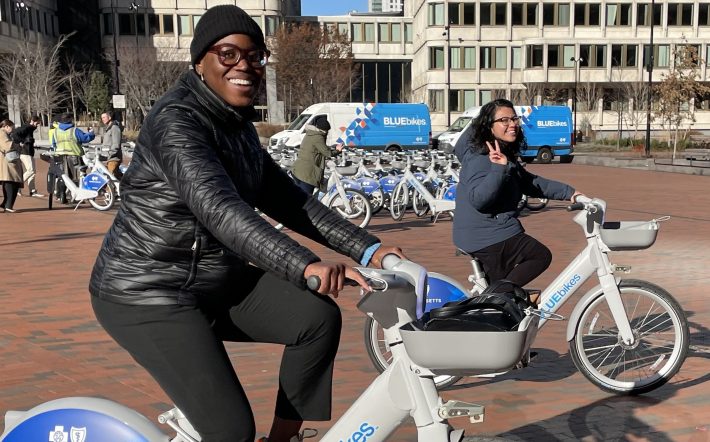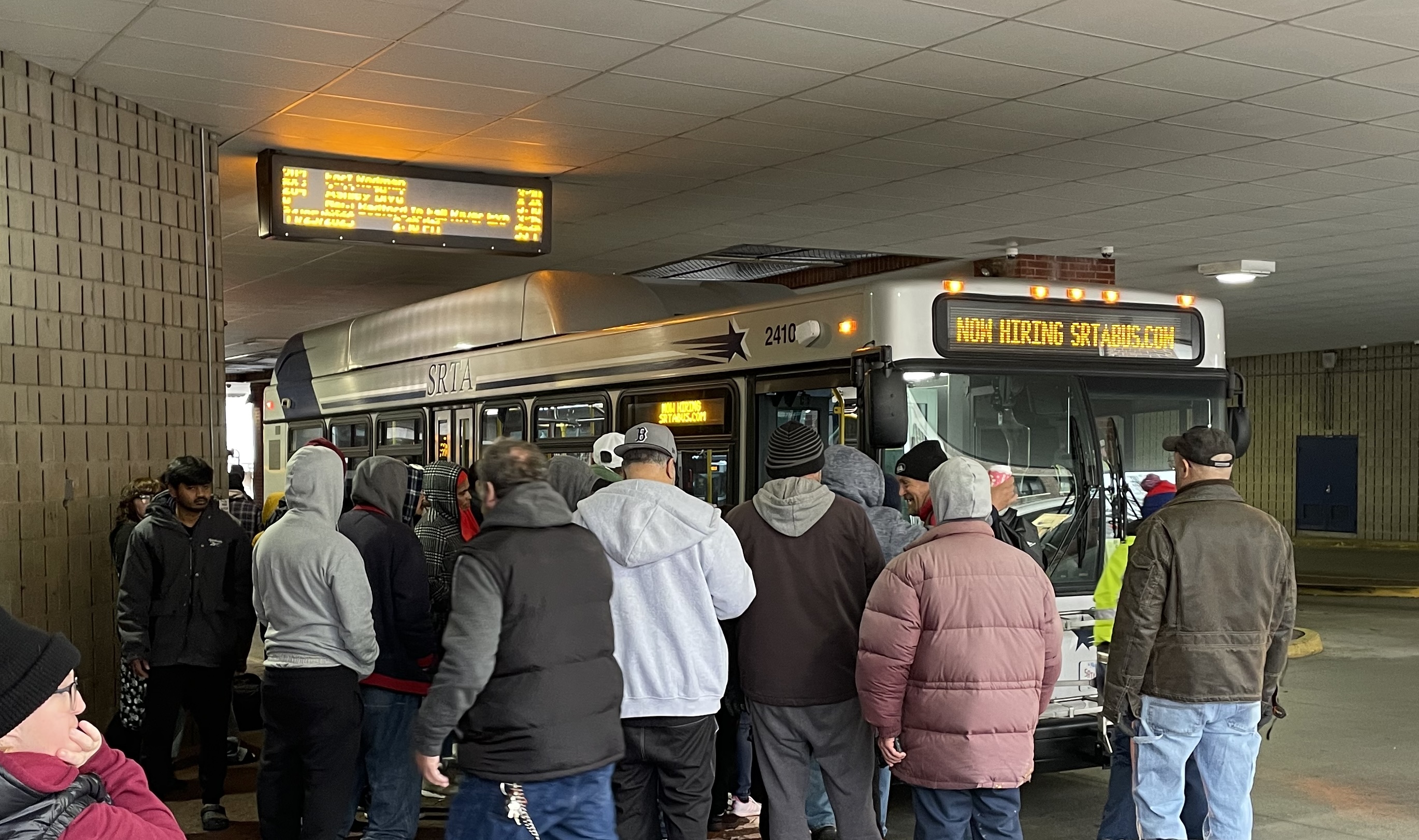Lyft, the company that operates the municipally-owned Bluebikes bikesharing system, is bidding to renew its contract for the next five years with terms that would allow for more towns to join the system, a considerable expansion of pedal-assist electric bikes, and an ambition to grow ridership 50 percent within the next three years.
StreetsblogMASS recently obtained a copy of Lyft's bid through a public records request.
The contract is still under negotiation, which means that many of the terms of the proposal could change as Lyft negotiates its final terms with the cities and towns that own the Bluebikes system (for more detail on how Bluebikes is owned and operated, read our previous coverage here).
The bid documents reveal a lot about the system's finances and Lyft's plans for increasing ridership in the near future.
Here are some key details:
A financially self-sustaining system
Lyft's proposal indicates that the Bluebikes system has reached a scale where its own revenues can cover the system's entire day-to-day operation costs without taxpayer subsidy – a rare feat for any transportation system.
Both Lyft and a competing bidder, Drop Mobility, presented business plans where user and sponsor revenues would cover all of the day-to-day operations costs of Bluebikes. Those costs presumably include a profit margin for the private-sector operators.
Additionally, Lyft's proposal would contribute $2 to $3 million a year in surplus revenues back to the municipal owners of the system to help cover the costs of new bikes and docking equipment for the system's expansion (more on that below).
Bluebikes to the 'burbs
Lyft's proposal supports regional goals to bring the Bluebikes system to more cities and towns – the proposal specifically mentions potential expansions to Lynn, Quincy, Belmont, Winthrop, and Waltham.
In the past, new municipalities had been required to subsidize the operations and maintenance costs for new stations.
Lyft's proposal would eliminate that requirement, although new municipalities would still need to pay the capital costs for their new stations and bikes.
More e-bikes, higher ridership
Lyft also expresses a strong desire to sell more e-bikes to the system's municipal owners in order to boost ridership.
"Abundant e-bikes have the potential to completely transform Bluebikes’ ridership," writes Lyft in their proposal. "E-bikes made up 25 percent of annual rides in their first year of operation (2024), despite only making up 13 percent of the total fleet."

Lyft also asserts that the newer pedal-assist bikes are especially popular among lower-income riders, with reduced-fare program participants taking twice as many e-bike rides as full-fare members.
To tap into that demand, Lyft wants to scale up the number of e-bikes in the fleet such that 1 in 3 bikes are electrified within two years.
"We expect these improvements to deliver a 50 percent growth in ridership, reaching 7 million annual trips by Year 3 of the new contract," the proposal says.

Plug-in stations
Another key factor in Lyft's proposal involves figuring out a better way to re-charge all those new e-bikes.
Currently, Lyft operations staff need to drive around to stations and swap out e-bike batteries when they're running low, which adds considerably to the company's labor and operations costs.
To reduce those costs and ensure more reliable charging for its e-bikes, Lyft wants to electrify 10 percent of its stations in the region (60 to 70 docks) within the first two years of the contract.
In that scenario, most of the fleet's e-bikes would eventually get docked at a charging station before they run out of juice.
If it can meet that threshold, the company suggests that it might be able to reduce e-bike user fees, "given the incremental savings and revenue generation that system electrification provides."
The costs of all this new equipment could be substantial, so Lyft is also proposing to give municipalities an extra $1 million a year from its operations revenue as a credit for new equipment during the first two years of the contract.
According to a term sheet in Lyft's proposal, the company would charge the region $3,426 for each new e-bike, and $30,000 to $60,000 for new charging-capable stations, depending on the number of docks and station amenities.
Scooters and adaptive bikes
Lyft's proposal briefly mentions that its new docking systems are compatible with its electric scooters, so if Bluebikes wanted to add station-based scooters to its fleet at some point in the future, it's an option.
The proposal notes that Lyft introduced shared electric scooters into Chicago's Divvy bikesharing system in 2022, and scooters subsequently made up 10 percent of Divvy rides in 2024.
Lyft is also proposing starting up "a free, recurring adaptive bike program at a park in Greater Boston during peak cycling season (May-October), giving participants a dependable opportunity to try out adaptive rideables in a safe, car-free environment."
Read Lyft's full technical proposal here.
Read the current Bluebikes operating contract, which dates to April 2017, here.






